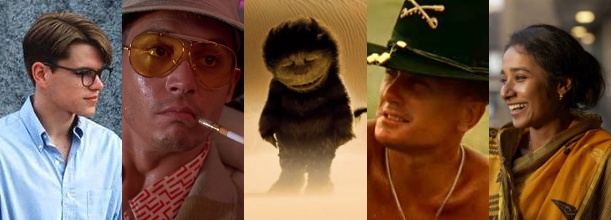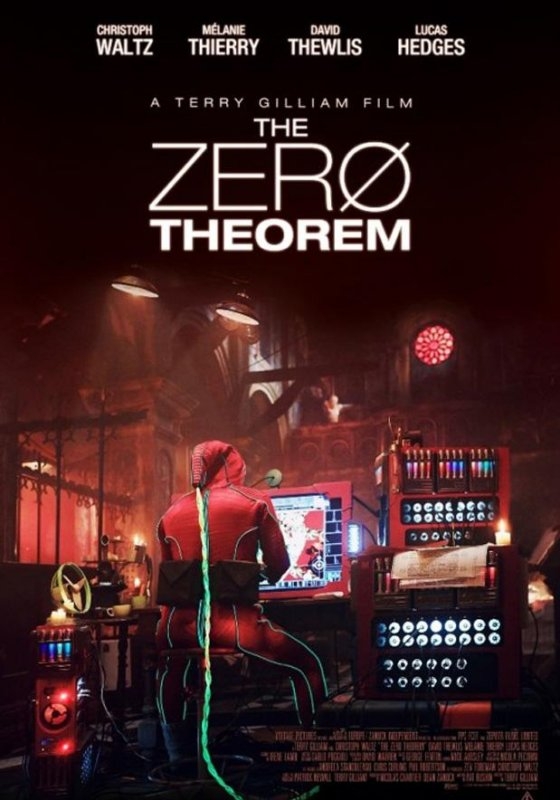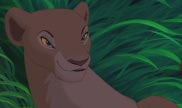Top 5 book to film adaptations ever

At the heart of all good books is… wait for it… a story. Plot, character, setting – all laid out for a filmmaker to pick up, stick in front of a camera, and make a great film out of. But, of course, it is just not that simple. First they usually have to cut out a huge chunk of material just to make it into a viewer-friendly two-hour picture. Aside from possibly angering a portion of readers whose favourite part of the book hasn’t made the grade, they also have a far more difficult task ahead: realising our imaginations. Many of us have spent hours building up our own ideas on what Mr Darcy really looks like, and for many of us, it is nothing like Matthew Macfadyen. So when he (albeit very charmingly) strolls onto the screen, we can’t help but be a little disgruntled. It’s not necessarily that each viewer has imagined the book completely differently from the next, it’s that our own Mr Darcys are unattainable in the real world. Most of us don’t imagine every single detail of a character, or setting, or lighting effect, but instead just build a ‘feeling’ of these wonderful, fictional, worlds. Essentially, we have all these un-filmable ideas in our heads so when they are, well, filmed, it does not always go smoothly.
So what do we look for in a film adaptation? I’m going to run through five of my best, and try to exorcise my Mr Darcy demons.
5. Heart of Darkness by Joseph Conrad/Apocalypse Now by Francis Ford Coppola.
Gracing many a best-book-film-adaptation list, possibly what makes Apocalypse Now so successful is that Coppola takes Conrad’s text and strips it down to its bare essentials. Instead of trying to recreate a story that Conrad had already told, Coppola sets Apocalypse Now in a new place and time, with new themes and characters. So what links it to the book? Its message. Coppola uses the source material to bring Conrad’s 1902 anxieties about civilization and power into the present day, showing the viewer that little has changed. Plus he also steals a few scenes outright, the swine!
4. Fear and Loathing in Las Vegas by Hunter S. Thompson / dir. by Terry Gilliam
A favourite book and film of many, Thompson and Gilliam both successfully throw the reader/viewer into a world that we never wanted to see, but can’t take our eyes off. As adaptations go, Gilliam is as loyal as you can get. Perhaps it’s because he adopts Thompson’s slapdash writing style and translates this into the form of his film. Perhaps it’s because Johnny Depp reportedly moved into Thompson’s basement to adopt his persona before filming. Perhaps it’s because most of what Thompson writes we just can’t imagine, so we’re grateful that Gilliam can show us. Pick a reason, because whatever it is, Fear and Loathing works.
3.Brick Lane by Ali Smith / dir. by Sarah Gavron
Yes it was award-winning, yes it split critical opinion, but Brick Lane is a film that holds its own. No matter your opinion of the film’s controversial content, its cinematic style enhances the text in a way that is rare to adaptation. Conveying London’s immigrant community, life in Bangladesh, and more personal issues of family life and adultery, the book’s passages are all captured in highly evocative scenes. It is an adaptation that will make you forget you have read the book.
2. The Talented Mr Ripley by Patricia Highsmith / dir. by Anthony Minghella
With a book so cinematic it is a wonder no-one made a film out of it sooner. Highsmith’s talent for evoking the landscapes of Italy, 1950s glamorous lifestyle, and not to mention the terrifyingly sociopathic mind of Tom Ripley, is reflected by Minghella perfectly. But what really puts this film above many other adaptations is how successfully it captures certain tensions that the book is brimming with. Almost every character is suspicious of the next, and almost every scene carries a hidden agenda. With so many secrets, this atmospheric piece is not one to miss.
1. Where the Wild Things Are by Maurice Sendack / dir. by Spike Jonze
It is the adaptation that everyone was talking about. How to make an iconic illustrated book into a feature length film without ruining everybody’s childhood memories. It was a risky one, but it paid off. Jonze takes lines from the book and turns them into witty epithets running through the film, which of course is fairly padded out to make it fit into a more classic structure. But Where the Wild Things Are works so well on screen because of this little bit extra, particularly the characterisation of Max, which is done in such a realistic way that when we go back to the book we wonder how we never saw him before. And if you’re not convinced by that, how about something a book can never provide? A beautiful soundtrack.
So perhaps they aren’t some of the most prominent adaptations. But for me, these directors have successfully captured something from the original text that makes me not care if the colour of Raoul Duke’s car is not quite right, or even that Ali Smith’s book was virtually cut in half. These directors have all explored their literary counterparts and come up with something new, something that evokes discussion, or something that is just plain better than I could ever have imagined it.










Recent Comments